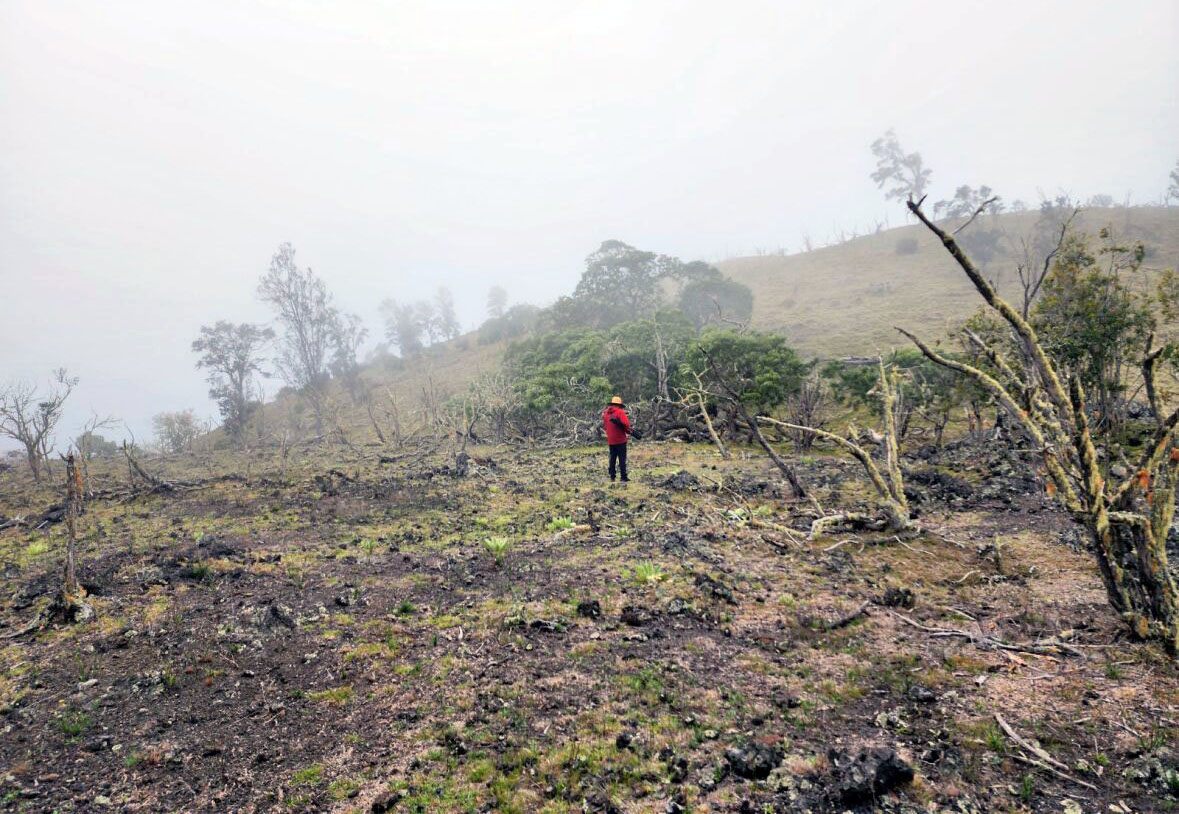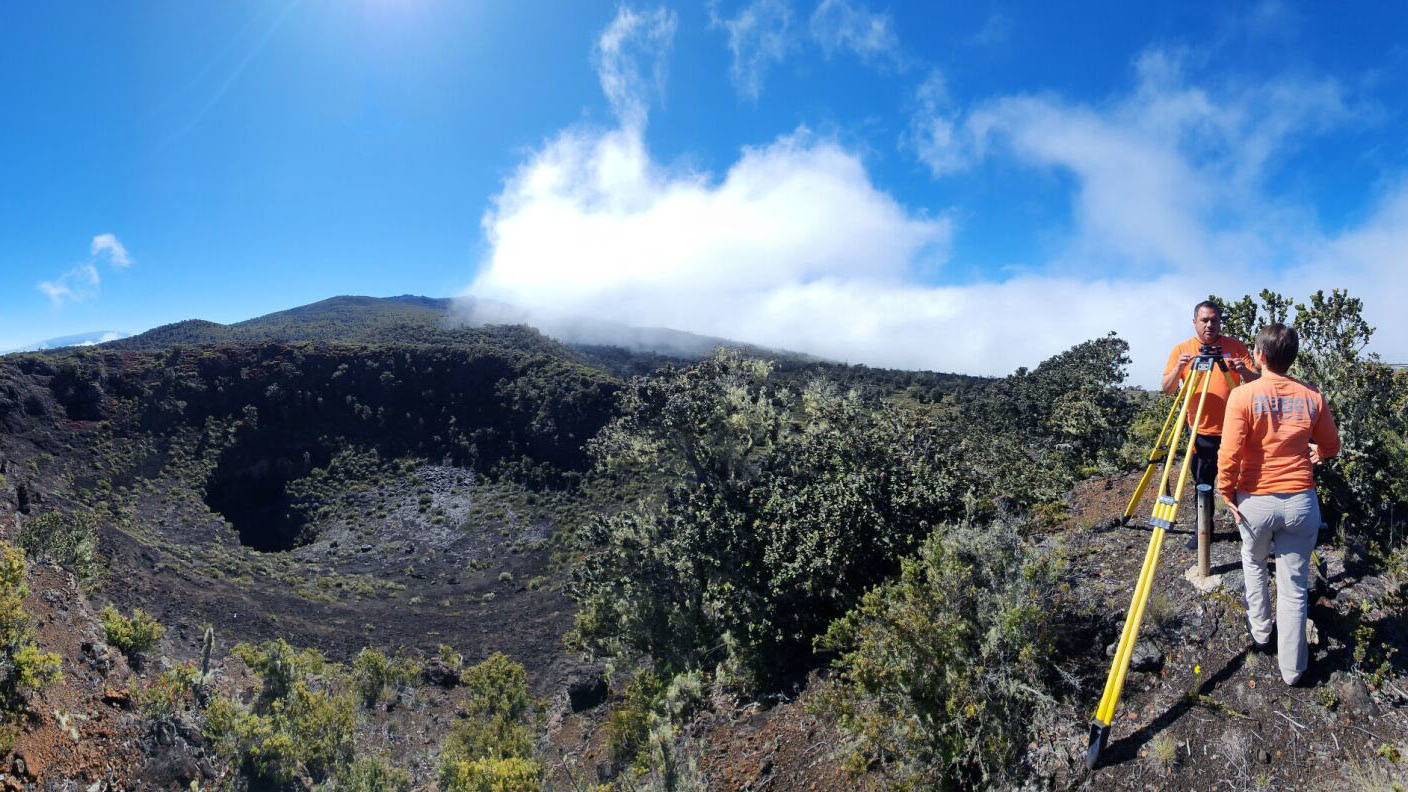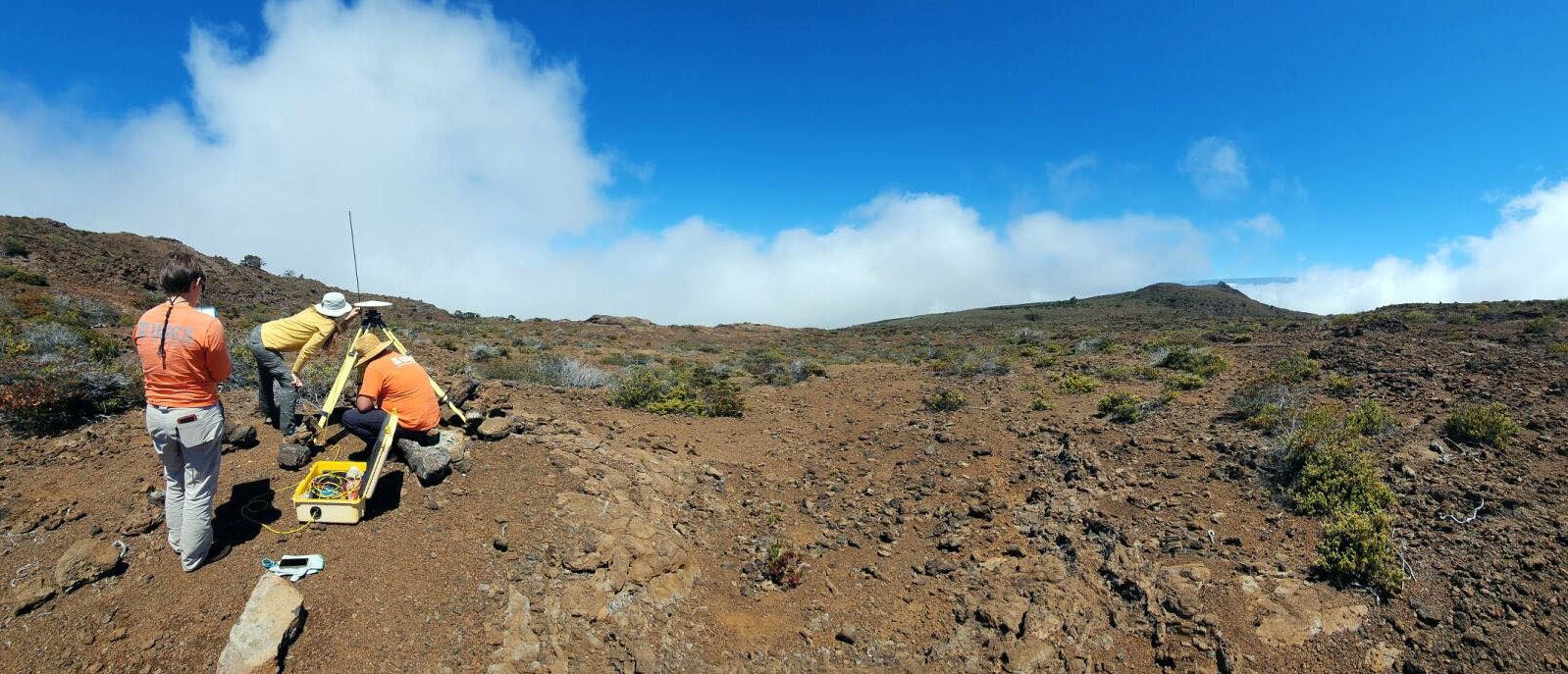(BIVN) – For the first time since 2015, scientists with the USGS Hawaiian Volcano Observatory have been able to conduct a GPS survey of Hualālai volcano in West Hawaiʻi.
The survey, which helps scientists to determine subtle patterns of ground deformation on the volcano, is usually done every three years. However, “due to eruptions at Kīlauea and Mauna Loa, the pandemic, and staff/personnel rotations”, this is the first survey in nine years.
The survey was conducted earlier in March.
Hualālai has not erupted for hundreds of years, but is still considered to be of “High Threat Potential”. The alert level for the volcano is NORMAL. This summary is from the USGS:
Though Hualālai is not nearly as active as Mauna Loa or Kīlauea, geologic mapping of the volcano shows that 80 percent of Hualālai’s surface has been covered by lava flows in the past 5,000 years. In the past few decades, when most of the resorts, homes, and commercial buildings were built on the flanks of Hualālai, earthquake activity beneath the volcano has been low. In 1929, however, an intense swarm of more than 6,200 earthquakes rattled the area around Hualālai Volcano for more than a month. The earthquakes were most likely caused by an intrusion of magma beneath the volcano. Two large earthquakes (each about magnitude 6.5) destroyed houses, water tanks, stone fences, and roadways. For these reasons, Hualālai is considered a potentially dangerous volcano that is likely to erupt again.
Scientists say no significant activity was detected at Hualālai volcano during the past month.
“Seismic activity remained low, and was representative of background activity levels at the volcano,” the USGS HVO wrote in a March 7th update, adding that “all earthquakes were of small magnitudes (below M3.0). The continuously recording Global Positioning System (GPS) instrument on Hualālai recorded no significant deformation in the past month.”

USGS: “To conduct the Hualālai campaign survey, HVO staff requested permission from land managers before navigating to benchmarks cemented into the ground surface. Data collected at each location will together provide a picture of how the ground surface of Hualālai volcano has changed since the previous survey in 2015. The survey data will also provide important ‘background’ information, supplementing and extending a several decades-long timeseries for monitoring Hualālai.” (USGS photo by A. Flinders)



by Big Island Video News4:38 pm
on at
STORY SUMMARY
KONA, Hawaiʻi - Last week, the USGS Hawaiian Volcano Observatory conducted its GPS survey of Hualālai, which is normally done every three years.